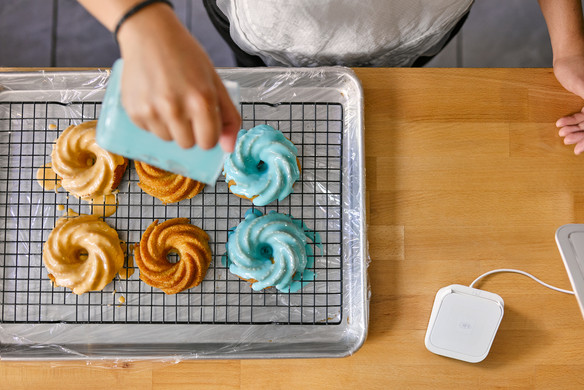Table of contents
If you’ve ever watched an ad or TV program and felt fond memories of the good old days rushing back at you, then you’re familiar with nostalgia. Nostalgia describes the sentimental longing we feel for periods in the past. It’s the warm feeling that envelops us when we think of positive times from our childhoods or youth.
Nostalgia marketing is about connecting your brand with positive concepts or ideas from the past. The goal is to associate your brand with the feelings of comfort and security that are triggered by those ideas. While the concept is not new, it’s become more popular in recent times and is used by companies of all sizes and across industries, from Netflix to McDonald’s. And that’s because it works.
Researchers at the Washington State University, College of Business and Economics, studied the responses of consumers to nostalgic versus non-nostalgic ads. The results showed that consumers who had seen nostalgia-themed ads rated the ad and the advertised brand more favorably compared to those who had seen non-nostalgic ads.
Another study found that nostalgic feelings made people willing to pay more for objects of interest. So, it’s no surprise that brands are leveraging old memories to build emotional connections with their customers and, ultimately boost sales.
Why nostalgia marketing works so well
Studies on autobiographical memory — the memory system that tracks episodes of our lives — have shown that when we are reminded of episodes from our past, we re-experience the emotions tied to the original episodes. So, if those memories were positive — think carefree moments from our childhoods, fun family dinners, road trips or game nights with friends, etc. — we’re likely to experience the same cheer.
Nostalgic campaigns remind your customers of those episodes that once made them feel good. As they relive the experience, they are likely to also extend those feelings of warmth to your brand for taking them back in time. That’s a win-win for everyone.
Real-life examples of nostalgia marketing
Here are some examples of businesses using nostalgia as a marketing strategy.
Johnny Doughnuts
Johnny Doughnuts uses classic recipes from the 1920s, emphasizes artisanal food preparation, and serves hand-glazed doughnuts that remind customers of simpler times.
Coca-Cola
The iconic brand has used nostalgia so well that a bottle of Coke reminds most people of family celebrations at Christmas. By linking Coke with Santa, the brand continues to leverage childhood memories of the happy figure.
Walmart
The retail giant packed in the nostalgia for its grocery pickup service advertisement by using familiar pop culture vehicles like Jurassic Park Explorer, Cinderella’s pumpkin carriage, and the Mystery Machine from Scooby Doo.
Beyond specific businesses using nostalgia as a marketing strategy, there’s also the emergence of broader nostalgic themes and applications, such as:
- the return of 1950s diner concepts (like Johnny Rockets)
- 1950s drive-in movie theaters
- retro-masculine aesthetic industry with leather and straight razor shaving, etc.
In the wake of COVID-19, some food brands have leveraged nostalgia and the need for social distancing to create amazing drive-in and drive-thru experiences. This trend is likely to continue beyond 2021. Square’s Future of Commerce Report shows that 52% of restaurateurs plan to offer a drive-thru service for takeout this year while 48% intend to offer the classic 1950s-style model of drive-in dining.
How to use nostalgia in marketing your business
As the world battles with COVID-19, nostalgia marketing can be an excellent way to help your customers relive simpler times and be part of their return to normalcy. Here’s how to do it right:
Identify memories relevant to your target audience.
From Gen Z to boomers, every generation has memories that are special to them. Two marketing professors, Morris Holbrook and Robert Schindler, conducted several studies on nostalgia marketing in the early 90s. They found that consumers strongly prefer aesthetic products (such as movies and music) associated with their youth, specifically, products that existed in their early to mid-twenties.
So, revisit the childhoods and youthful years of your customers and identify people and objects they’d be happy to see again, as well as events and trends they’d be happy to relive.
Be sure to choose trends that align with your business values — one of the pitfalls of revisiting the past as a marketing strategy is that it could easily backfire if done incorrectly. For example, it would be best to avoid recalling memories that could trigger controversy or lead to highly polarizing conversations.
Find occasions to leverage nostalgia.
Look out for occasions where nostalgic elements would be appropriate. Here are some occasions where brands have taken advantage of nostalgia:
Rebranding — Burger King performed their first rebrand in 20 years and they chose to revisit their iconic logo from the 70s. Customers who knew the brand from those days would catch a whiff of nostalgia.
Announcing a change in business goals or direction — McDonald’s used a nostalgia-driven ad to announce the removal of artificial preservatives and antibiotics from their products.
Celebrating a milestone or anniversary — Fairy Liquid brought back its original plastic white bottle design for a limited period to celebrate its 50th anniversary.
You can create merchandise or limited-edition products that tie into the occasion and reward customers who buy products during this time for their loyalty. This will help customers further associate their nostalgia with feel-good rewards, so they can look forward to future occasions.
Square Loyalty makes it easy to manage customer rewards so you can nurture long-term relationships with your customers. Customers who participate in a Square Loyalty rewards program are twice as likely to be repeat customers and spend 37% more — this ties into the overall goal of using nostalgia to build brand loyalty and command more sales.
Fuel your campaign with social media.
One of the biggest benefits of nostalgic campaigns is that they are inherently shareable. The good feeling behind “Oh, I remember this!” propels people to share nostalgic posts with family and friends who are a part of those memories.
Also, while big businesses may have the budget for television ads, social media comes in very handy for a small business that does not have such deep pockets. So, take advantage of social media as much as you can.
When sharing posts that invoke memories, such as throwbacks to famous events, moments, or people, use popular hashtags such as #WaybackWednesday, #ThrowbackThursday, and #FlashbackFriday to boost their visibility.
Take advantage of features like Square Payment Links that allow you to insert payment links in your social media posts so customers can pay you quickly and without hassle — right when those nostalgic feelings are at their peak.
Whether you’re selling to Gen Z or millennials, linking positive memories with your brand can help you create long-lasting emotional connections with your customers. Whatever you do, stay true to your brand values and use nostalgia in fun, authentic ways.
![]()











